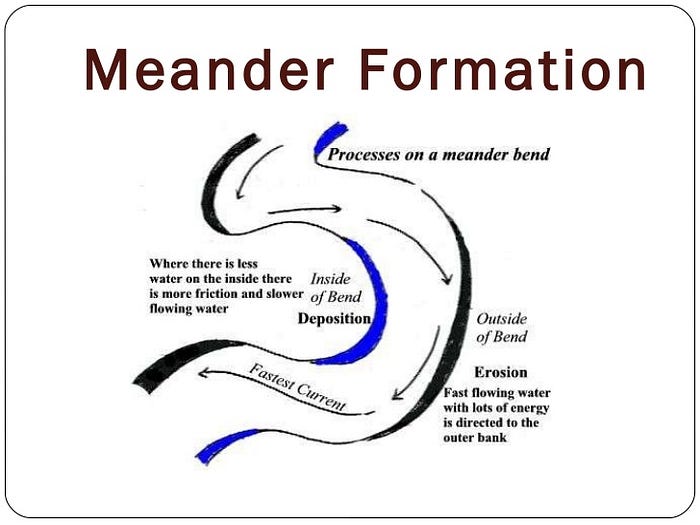Pi is the most famous mathematical symbol. But what makes it so famous?
The fact that circular shapes are so ubiquitous in nature. From circular planets, sun and moon to shape of tree trunks and fruits. Any calculation that involves circular objects requires pi. And Pi is a recurring character in many concepts of physics. Pi is widely used while studying wave motion for sound, light or water. It defines motion for sub-atomic particles and even occurs in the Heisenberg’s uncertainty principle in quantum physics.
One fascinating place where Pi emerges is in determining the shape of rivers! Or more precisely, the bendiness of rivers. The ‘Meandering ratio’ or the ‘sinuosity ratio’ is the ratio of river’s actual length to the distance from its source to its mouth as the crow flies. So a totally straight river would have a sinuosity of 1, while very bendy rivers can have very high sinuosity. Turns out that the average sinuosity of rivers around the world approaches — you guessed it — pi!

Albert Einstein was the first to come up with a reasoning for this fascinating fact. The slightest curve in a river will generate faster currents on the outer side of the curve. This erodes the outer bank more quickly than the inner bank and the river moves outward, creating a larger bend. The length along the river of the meander is like the circumference of a circle, while the straight-line distance from one bend to the next is diameter-like. Hence, it makes sense that the ratio of these lengths would be pi-like.

— — — — — —
From the desk of Aditya Khanduri
About me (Why I started Polygyan)

